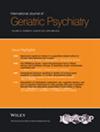Profiling Social Detachment in Older People in Taiwan: A Cluster Analysis
Abstract
Objectives
The Social Detachment Questionnaire for the Older Population (SDQO) is a validated tool that assesses various dimensions of social relationships. This study aimed to profile social detachment among older people in Taiwan using the SDQO and explore its use in distinguishing groups with varying levels of social engagement.
Methods
A telephone-based survey was conducted, collecting demographic data and responses to the SDQO and Brief Symptom Rating Scale-5 (BSRS-5). Cluster analysis based on SDQO dimension scores was performed to identify groupings. Regression analyses examined the association between social engagement clusters, demographic variables, and BSRS-5 scores. A receiver operating characteristic curve was established and the area under the curve was calculated to identify the cutoff for distinguishing individuals with high and low social engagement.
Results
In a representative sample of 2549 individuals aged 55 and above in Taiwan, cluster analysis identified two groups based on social engagement levels as measured by the SDQO. The low social engagement cluster, indicating higher social detachment, was more likely to consist of older individuals (≥ 75 years), those without children, and those with lower education levels (≤ 9 years). After adjusting for demographics, the low social engagement cluster was associated with higher BSRS-5 scores. The optimal SDQO cutoff for identifying low social engagement was 27/28.
Conclusions
The SDQO can identify socially detached older people, who are more likely to experience increased psychological distress. Screening older individuals with demographic risk factors using the SDQO could help identify those most vulnerable to adverse health outcomes related to social detachment.

 求助内容:
求助内容: 应助结果提醒方式:
应助结果提醒方式:


